Peripheral Edema
Review our guide on peripheral edema to learn about its symptoms, causes, and treatment, so you can manage your condition.
Read More
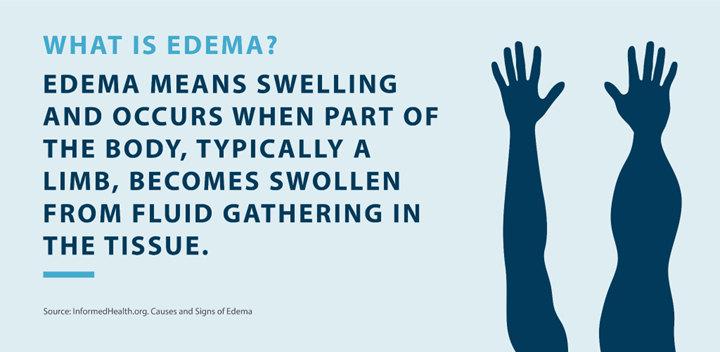
Edema is a condition that occurs when fluid builds up in the tissue of your body. In most cases, edema doesn’t pose any health risks if managed, but what happens if edema is left untreated? Edema left untreated can continue to get worse, leading to increased swelling, blisters, and more. Visiting a doctor for edema treatment is important, especially if you haven’t attempted to find treatment options.
The difficult part about living with edema is that it can be hard to identify the root cause, making it challenging to find a treatment. Fortunately, there are several ways to manage symptoms of edema, such as the use of compression garments and making lifestyle changes. However, if edema is left untreated, it can lead to health complications.
While the consequences of untreated edema start out fairly small, those consequences can worsen the longer you leave edema untreated. In some cases, untreated edema can lead to scarring, skin ulcers, infections, and more. Read our guide below to learn more about what happens if edema is left untreated and how to treat it.
Edema is a term used to refer to swelling that occurs as a result of built-up fluid in your body’s tissues. When fluid that’s supposed to be stored in blood vessels or other parts of the body enters the tissues, it can cause extremities to swell. In many cases, swelling occurs in the arms, legs, hands, and feet. However, edema can occur in any area of the body, such as the head, neck, chest, abdomen, and genitals.

As far as risk factors and causes go, edema can occur for many reasons. It could be a result of a medical condition you have, or it could be caused by an allergic reaction like a bee sting. Edema may or may not be permanent depending on the cause. Even in cases of chronic edema, there are treatment options that can help people living with edema manage their symptoms and relieve pain and swelling.
Because untreated edema can lead to further complications, getting treatment early on is important. If you’re experiencing these symptoms of edema, you should visit a doctor for a professional diagnosis:
Keep in mind that edema symptoms may vary from person to person. Only your doctor can determine what’s causing your edema and can recommend the proper treatment options.
Edema can be caused by several things, and there’s a difference between acute edema. Understanding the cause of your edema can help you decide on a treatment option. Here are some of the most common causes of edema:
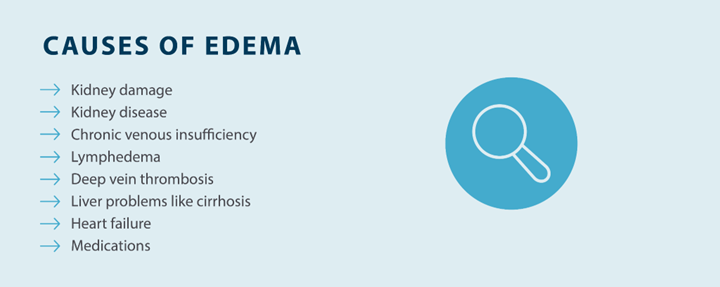
Now that you know about some of the symptoms and causes of edema, what happens if edema is left untreated? While edema might seem manageable at first, the symptoms can continue to get worse as more fluid builds up, especially if you don’t address the root cause of your edema. Some cases of edema may be permanent, but you can still take steps to reduce the swelling, relieve the pain, and slow down some of the damage that edema can cause over time.
The consequences of neglecting edema treatment depend on the cause of the edema. Edema that’s caused by another medical condition that’s left untreated can continue to worsen if you don’t treat the underlying condition.
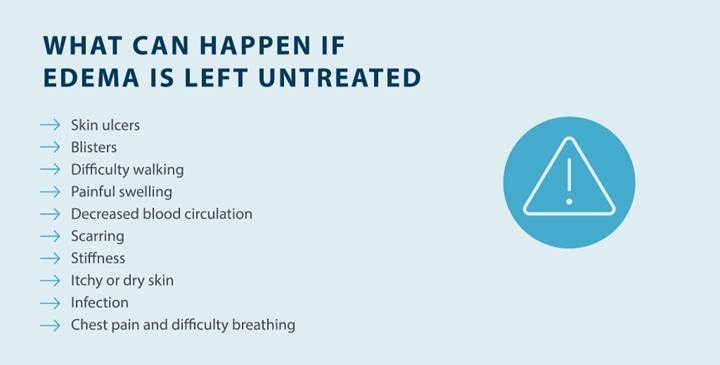
Going to the doctor to have edema diagnosed is important. In order to diagnose edema, your doctor will perform a physical exam and look at your medical history to determine your risk factors for edema. Understanding when your symptoms started and how severe your edema is can help your doctor develop a treatment plan that’s better suited for you.
Your doctor may also perform tests in order to diagnose edema, including:
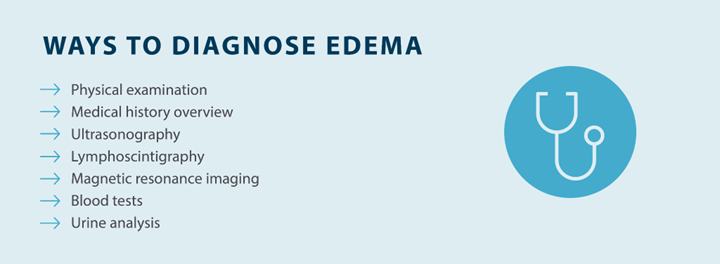
Getting a proper diagnosis from your doctor can help determine if you have edema and rule out any other conditions that might pose similar symptoms to ensure you get the necessary interventions.
The good news about edema is that there are treatment options available for its various types. While chronic edema typically can’t be cured, you can get relief from the symptoms that come with edema to live a happy, healthy life. Here are some of the edema treatment options:
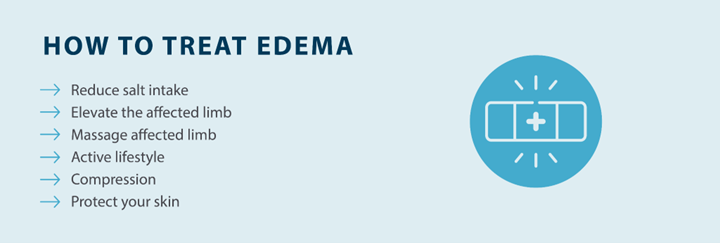
In addition to these measures, edema can be treated with the use of a pneumatic compression device. At Tactile Medical, you can find head and neck treatment, upper body treatment, and lower body treatment with our Flexitouch Plus system. Our lymphedema treatment and management tool helps stimulate your lymphatic system to relieve swelling and symptoms. If you’re living with edema, reach out to your doctor today. Our edema treatment systems are doctor-prescribed and recommended for at-home use, so you can treat and manage your symptoms in an area you’re most comfortable in.
Treating edema is an important part of avoiding the complications that can come with it. The sooner you get a diagnosis and start edema treatment, the less likely you are to experience infections, ulcers, and dry skin. If you’re living with edema, contact Tactile Medical to learn more about the Flexitouch Plus system and how it helps with lymphedema treatment.
Review our guide on peripheral edema to learn about its symptoms, causes, and treatment, so you can manage your condition.
Read More
Review our guide on the differences between inflammation vs. swelling, so you can understand how they impact your body differently.
Read More
Review our guide on chronic venous insufficiency (CVI) to better understand the symptoms, causes, and treatment options to get the care you need.
Read More
Read More
Call us at 1.800.575.1900